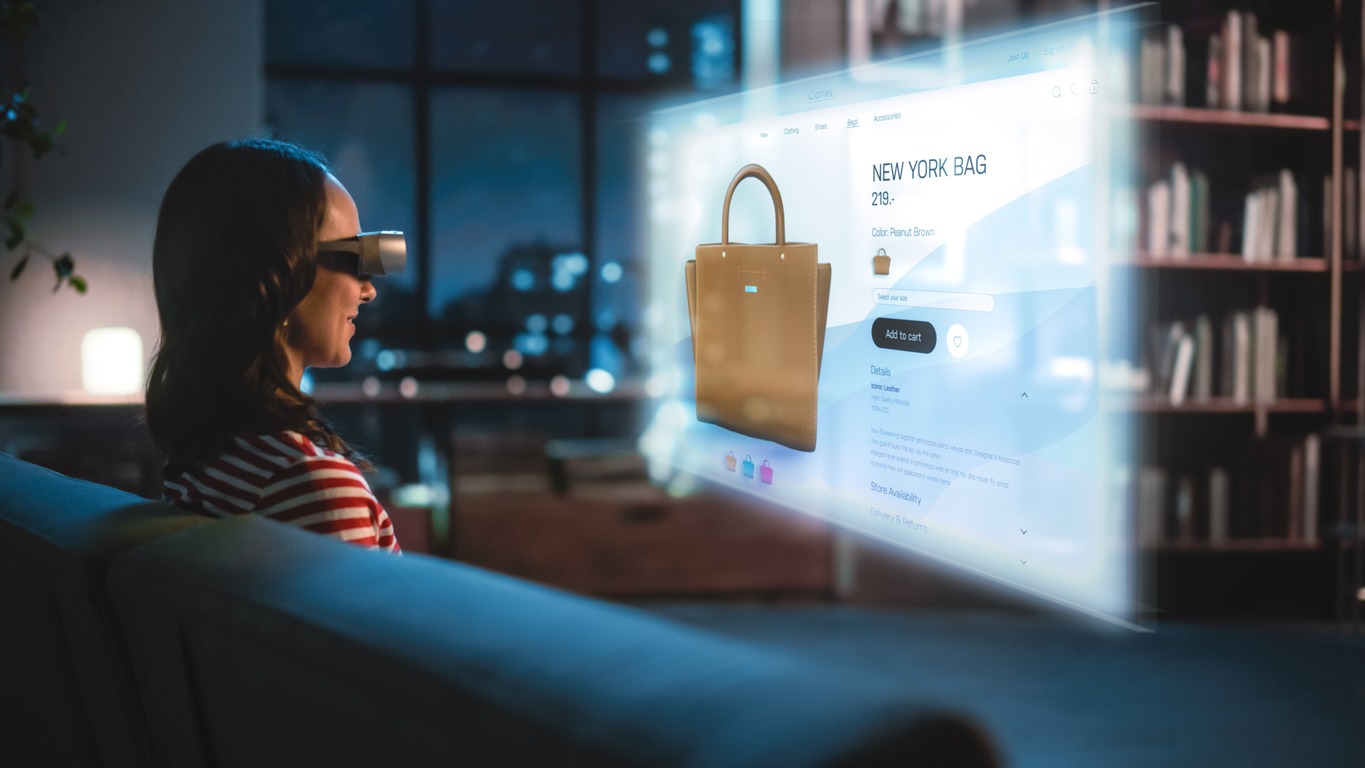The fashion industry, known for its creativity and dynamism, has entered a new era of transformation powered by digitalization. This change is not just a fleeting trend but a fundamental shift that is reshaping every aspect of fashion, from design and production to marketing and sales. In this comprehensive exploration, we will delve into the multifaceted impact of digitalization on the fashion industry, examining how technology is not just altering existing practices but also introducing revolutionary new concepts.
1. Digital Design and Production
The first area where digitalization has made a significant impact is in the realms of design and production. Traditional methods of fashion design involved hand-drawn sketches and manual fabric cutting, which were not only time-consuming but also limited in precision.
Computer-Aided Design (CAD): CAD systems have revolutionized fashion design. They allow designers to create more accurate and detailed designs, experiment with colors and textures, and make modifications easily. This precision and efficiency have accelerated the design process, enabling faster turnarounds from concept to final product.
3D Printing and Textile Innovation: 3D printing technology is pushing the boundaries of what can be created, offering new possibilities in textile creation and garment manufacturing. This technology enables designers to produce complex designs and patterns that would be impossible or prohibitively expensive to create using traditional methods.
2. Supply Chain Optimization
Digitalization has significantly optimized the fashion industry’s supply chain. Traditional supply chains were often plagued by inefficiencies, including overproduction, excess inventory, and a lack of transparency.
In-depth Analysis of Real-time Data and Analytics
Predictive Analytics and Demand Forecasting: The application of predictive analytics in the fashion industry has revolutionized demand forecasting. By analyzing vast amounts of data, including past sales trends, seasonal variations, and even current fashion trends on social media, brands can accurately predict future demand. This precision in forecasting helps in aligning production with actual market needs, thus significantly reducing the risks of overproduction.
Streamlined Inventory Management: Advanced analytics enable fashion retailers to manage their inventory more effectively. By having a real-time view of stock levels across various channels and understanding purchase patterns, brands can make informed decisions about stock replenishment and distribution. This approach not only minimizes the costs associated with holding excess inventory but also ensures that popular items are adequately stocked, enhancing customer satisfaction.
Enhanced Supplier Management: Digitalization has enabled brands to maintain a more collaborative relationship with suppliers. Through data sharing and analytics, both parties can achieve a better alignment of supply with demand, leading to more efficient production cycles and reduced lead times.
Blockchain Technology
Traceability from Source to Store: Blockchain technology offers unparalleled traceability in the fashion supply chain. Each garment can be tracked from its raw material source, through the manufacturing process, and finally to the retail outlet. This traceability is crucial not just for verifying the authenticity of products but also for confirming that ethical practices have been followed throughout the production process.
Combating Counterfeiting: The fashion industry, particularly the luxury segment, faces significant challenges with counterfeit products. Blockchain’s immutable ledger system provides a foolproof method of authenticating products, thereby safeguarding brand reputation and consumer trust. Dive deeper into our newest exploration of combating counterfeit fashion in the heart of NYC.
Facilitating Sustainable Practices: As the industry moves towards more sustainable practices, blockchain helps in verifying the sustainability claims of products. By tracking the environmental and social impact of each step in the supply chain, blockchain enables consumers to make informed purchasing decisions based on sustainability.
Empowering Consumers with Information: The transparency afforded by blockchain technology empowers consumers with detailed information about their purchases. This level of transparency responds to the growing consumer demand for ethical production practices and sustainable products.
3. E-commerce and Digital Retail
The advent of e-commerce and digital retail has dramatically altered the landscape of the fashion industry. This shift from traditional retail models to digital platforms is not merely a change in sales channels but represents a fundamental transformation in how fashion is marketed, accessed, and purchased.
Enhanced Global Reach and Accessibility:
Breaking Geographical Barriers: E-commerce has effectively dismantled the geographical barriers that once limited fashion brands. A designer in Paris can now sell effortlessly to a customer in Tokyo. This global accessibility has not only expanded the customer base for brands but also exposed consumers to a wider array of fashion styles and cultures.
24/7 Shopping Experience: Unlike traditional stores with set hours, online fashion platforms operate round the clock. This around-the-clock availability aligns with the modern consumer’s expectation for constant accessibility, catering to different time zones and lifestyles.
Localized Strategies for Global Markets: As fashion brands reach global audiences, they also adopt localized strategies. This includes offering localized content, addressing regional fashion preferences, and providing customer service in local languages, all of which enhance the shopping experience and brand appeal in different regions.
The Role of AI in Personalizing the Shopping Experience
Advanced Product Recommendations: AI algorithms have the capability to analyze vast amounts of data regarding consumer preferences, past purchases, and browsing history. This data is used to create highly personalized product recommendations, making the shopping experience more relevant and engaging for the consumer.
Enhanced Customer Insights: AI tools provide valuable insights into customer behavior, preferences, and trends. Brands can use this information to tailor their marketing strategies, product designs, and even inventory management to better align with customer needs.
Interactive Shopping Experiences: AI is also being used to create more interactive and immersive shopping experiences. Features like virtual try-ons, using augmented reality (AR), allow customers to see how clothes would look on them without physically trying them on. This interactive element not only enhances customer engagement but also reduces the likelihood of returns.
Chatbots and Improved Customer Service: AI-powered chatbots are providing 24/7 customer service, offering instant responses to customer inquiries, and assisting in the shopping process. This immediate and personalized customer service improves the overall shopping experience and customer satisfaction.
4. Digital Marketing and Social Media
The digitalization of marketing, especially through social media, has fundamentally altered the way fashion brands interact with their audience. This shift from traditional media to digital platforms offers new, innovative ways to engage customers, tell brand stories, and showcase products.
The Rise and Impact of Influencer Marketing
Building Authentic Connections: Influencers, with their dedicated followings, serve as relatable figures, bridging the gap between brands and consumers. Their endorsements often feel more authentic and personal compared to traditional advertising, fostering a sense of trust and relatability among their audience.
Targeted Audience Reach: Influencers cater to a variety of niches, allowing fashion brands to target specific demographics and interest groups more effectively. This targeted approach ensures that marketing efforts are reaching the most receptive audiences, improving engagement and conversion rates.
Content Creation and Collaboration: Influencers are not just marketing tools; they are content creators who bring a unique voice and style. Collaborations between fashion brands and influencers often result in original, creative content that resonates with the audience, further enhancing brand appeal.
Measurable Impact: The digital nature of influencer marketing allows for detailed analytics and measurement of campaign effectiveness. Brands can track engagement rates, reach, and conversion metrics, making it easier to assess the ROI of influencer partnerships.
Immersive Technologies: Enhancing Consumer Engagement
Virtual Try-Ons and AR Experiences: AR technology allows consumers to virtually try on clothing and accessories using their mobile devices, providing a convenient and personalized shopping experience. This technology not only boosts consumer engagement but also aids in decision-making, potentially reducing return rates.
3D Fashion Shows and VR Showrooms: The use of VR and 3D modeling has introduced new ways to showcase fashion collections. Virtual fashion shows and digital showrooms provide immersive, interactive experiences that transcend geographical limitations, allowing global audiences to experience collections as if they were present physically.
Storytelling Through Technology: VR/AR technologies enable brands to tell stories in an engaging and interactive manner. Whether it’s taking customers behind the scenes of a fashion shoot or transporting them to a virtual world that reflects the brand’s ethos, these technologies are redefining narrative techniques in fashion marketing.
Enhanced Online Shopping Experience: Beyond marketing, these technologies are being integrated into the online shopping experience, making it more interactive and engaging. This integration helps in replicating some aspects of in-store shopping, enhancing the online retail experience.
5. Sustainable and Ethical Fashion
The digital revolution is also playing a crucial role in promoting sustainable and ethical practices in the fashion industry.
Sustainability Through Technology: Digital tools are helping brands to reduce waste and improve sustainability. From digital sampling to efficient inventory management, technology is enabling more environmentally friendly practices.
Consumer Awareness and Demand: Digital platforms are raising awareness about the importance of sustainability and ethics in fashion. Consumers are increasingly seeking out brands that align with these values, pushing the industry towards more responsible practices.
6. The Rise of Fast Fashion and Its Digital Acceleration
Digitalization has played a pivotal role in the rise and expansion of fast fashion. The ability to quickly design, produce, and distribute clothing has been significantly enhanced by digital technologies.
Speed to Market: Digital tools have dramatically shortened the time from design to retail, allowing fast fashion brands to respond rapidly to changing trends and consumer demands.
Online-Only Retailers: The emergence of online-only fashion retailers, leveraging digital platforms for their entire operation, has further fueled the fast fashion phenomenon, offering consumers a constant stream of new styles at competitive prices.
7. Challenges and Criticisms in the Digital Era
While digitalization brings numerous advantages, it also presents challenges and criticisms that the fashion industry must address.
Data Privacy and Security: With the increasing use of digital technologies, concerns about consumer data privacy and security have risen. Fashion brands need to ensure robust data protection measures to maintain consumer trust.
Digital Divide: The digital divide between large and small fashion brands is growing. Smaller brands may struggle to keep up with the technological advancements and investments of their larger counterparts, potentially impacting their competitiveness.
8. The Future of Fashion
As we look to the future, several digital trends are likely to shape the next phase of the fashion industry’s evolution.
AI and Machine Learning: Advanced AI and machine learning are set to further revolutionize design and production processes, as well as personalize customer experiences.
Sustainable Technologies: Innovations in sustainable technologies will continue to be a significant focus, as the industry seeks to reduce its environmental impact.
9. Consumer Behavior and Digital Interaction
The way consumers interact with fashion brands has been transformed by digitalization. The modern consumer expects a seamless digital experience, from browsing to purchasing.
Shift to Online Shopping: The convenience and variety offered by online shopping have led to a significant shift in consumer behavior, with more people preferring to shop online than in physical stores.
Engagement through Social Media: Social media platforms have become key spaces for consumer engagement, with brands leveraging these platforms for marketing, customer service, and community building.
10. Education and Skill Development in the Digital Age
The digital transformation of the fashion industry has also impacted education and skill development.
Emergence of New Skills: There is a growing need for professionals skilled in digital tools and technologies, from digital fashion design to data analytics.
Educational Institutions Adapting: Educational institutions are adapting their curricula to include digital skills, preparing the next generation of fashion professionals for a digitally-driven industry.
Digitalization has profoundly impacted the fashion industry, offering new opportunities and challenges. It has revolutionized how fashion is designed, produced, marketed, and consumed. As digital technologies continue to evolve, they will keep shaping the future of fashion, making it more responsive, sustainable, and in tune with the digital age.
This comprehensive overview highlights the multifaceted and dynamic nature of the fashion industry in the digital era, emphasizing the importance of continual adaptation and innovation to stay relevant in this rapidly changing landscape.
Conclusion
The exploration of how digitalization has influenced the fashion industry leads to an essential realization. The digital revolution represents a significant and enduring transformation, fundamentally altering the essence of the fashion world. This shift has permeated every level of the industry, affecting everything from a designer’s initial creative process to the consumer’s final purchase.
One of the most notable impacts is the enhancement of creativity and efficiency. Digital tools such as Computer-Aided Design (CAD), 3D printing, and Artificial Intelligence (AI) have not only broadened the scope for creativity but have also streamlined the design and production processes. These innovations have opened up new possibilities for fashion design, making it more efficient and precise.
Another significant change is the transformation of the supply chain. The integration of advanced analytics, the Internet of Things (IoT), and blockchain technology has revolutionized supply chain management. This integration has introduced a level of transparency and efficiency previously unseen in the industry, allowing for more precise tracking and management of resources.
The growth of e-commerce has been another crucial development. Online retail platforms have extended the reach of fashion brands on a global scale, breaking down traditional barriers and democratizing access to fashion. This shift challenges the established norms of retail, offering consumers worldwide access to fashion at their fingertips.
Digital marketing and social media have also dramatically altered how fashion brands engage with their audience. The emphasis on digital storytelling and influencer partnerships has transformed marketing strategies, making them more interactive and personalized. This evolution reflects a deeper understanding of the digital consumer’s behavior and preferences.
Sustainability and ethical responsibility are also areas where digitalization has made a significant impact. The industry has seen a push towards more sustainable practices, with digital tools aiding in reducing waste and promoting ethical production methods. This shift is not just about technology but reflects a growing consciousness about the industry’s role and responsibilities.
As the fashion industry continues to adapt to these digital changes, it faces new challenges and opportunities. Success in this evolving landscape depends on the ability to adapt and embrace digital innovations. Fashion brands, regardless of their size, must integrate these technologies to stay competitive and relevant.
Additionally, the industry must navigate critical issues like data privacy, bridging the digital divide, and maintaining sustainable practices. Addressing these challenges is vital to ensure a responsible and inclusive future for fashion.
In summary, the impact of digitalization on the fashion industry is a clear demonstration of technology’s transformative potential. It is a narrative of adaptation, innovation, and revolution. Looking ahead, the intersection of fashion and technology promises to continually reshape the industry, offering exciting possibilities for its future in this dynamic and ever-changing domain.






